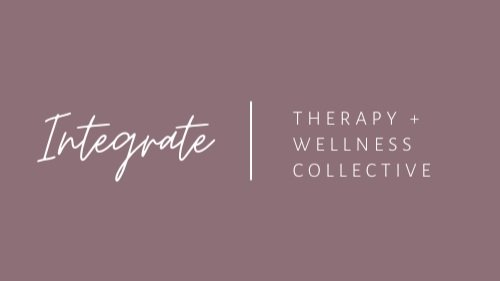Where Does Your Doubt Come From?
By Jen Bennethum
Doubt doesn’t announce itself with fanfare. It drifts in like a soft fog, blurring thoughts once clear over years without realizing that it is there or how it is affecting you. You feel doubt before you name it—a tension building in your shoulders, a catch in your breath before you speak your truth, the timid retreat of a dream before it ever leaves the shoreline of your heart. Research has shown that some people are born more sensitive to our environment because of how our nervous system perceives things outside of ourselves—so an example could be that we startle easily, notice nonverbal cues from someone around us (micromovements) or notice a reflection in our peripheral view or even experience light sensitivity. This will then in turn influence the way the world looks to us as we experience life growing up. Different circumstances can then influence how or if we doubt ourselves, like moving around a lot or parents divorcing or messages received from parents, siblings, teachers and others who might make unknowing comments like “your sister is smarter,” “look how nice she looks in her dress” or getting picked last for a team.
“Life is about overcoming self-doubt. But you don’t grow if you don’t question yourself.” – Lenny Henry
The Whisper in the Body
Long before doubt becomes a thought, it whispers through your body. A clenched jaw that tightens when a boundary is tested. A fluttering belly that speaks of unspoken “what ifs.” These somatic signals aren’t flaws to fix but messengers calling you to pause, listen, and ask: Whose voice is this, and what story am I living right now?
Surfing with Doubt: Bethany’s Story
At just thirteen, Bethany faced a moment when doubt became a tidal wave. After losing her arm in a shark attack, her sanctuary—the ocean—felt like the source of trauma. Yet she did not let that doubt define her. Through physical adaptation, unwavering determination, and a deeply held sense of purpose, Bethany returned to the waves. Her body, once the site of perceived limitation, became a testament to resilience. She learned not to banish doubt but to surf with it, anchored by her passion rather than paralyzed by fear.
Meeting Doubt with Compassion
In our own lives, doubt does not need to be the captain of our ship. We begin by befriending it, giving it voice and form. We ask gentle questions: What are you protecting me from? As that part speaks, we respond from a place of wisdom and care, offering the words it longed to hear such as “You are safe now”. We ground ourselves in the present moment—feeling our feet on the earth, softening the belly with each breath, humming to awaken a sense of safety in the nervous system.
Tracing doubt back to its root brings clarity. Was it first said by a critical caregiver, a disappointed peer, or an injury to the heart? Naming the protective intent behind it softens shame and opens space for negotiation: I see you trying to keep me safe. Will you allow me to try this step forward?
Beyond the Waves
Bethany’s story reminds us that doubt, at its fiercest, can become the current that carries us into newfound strength. We may not face literal waves, but each of us stands before our own thresholds of fear. When you feel that whisper rise again, remember: you can invite it in, learn its language, and paddle forward anyway—not to conquer it, but to remain tethered to what sets you alive.
Overcoming doubt isn’t about erasing it—it’s about building a relationship with it that doesn’t hold you back. Here are a few embodied and integrative pathways you can explore:
Create Inner Safety. Doubt often stems from a nervous system that’s bracing for danger. I suggest having small micro-moments of safety: feeling the weight of a blanket, noticing breath without changing it, or placing a hand over the heart. These anchors invite the body out of survival mode so clarity can emerge.
Practice Inner Reparenting. Many people can carry doubt rooted in early childhood—such as from authority figures who discouraged risk or peers who shamed vulnerability. I suggest you attempt to identify what your inner child needed to hear and begin offering those words now. It could sound like: “I believe in you. I’ll stay with you as we try this.”
Name the Protective Strategy. Doubt is rarely just self-sabotage—it’s a part of you trying to protect against disappointment, rejection, or overwhelm. Recognizing the intent behind it softens shame and opens the door for more compassionate negotiation: “I see you’re trying to help. Can we try this together?”
Use Sensory-Based Rituals to Shift State. Try different practices like walking barefoot, drumming, chanting, or immersing hands in cool water. These tactile experiences help pattern a felt sense of movement—even when the mind is still steeped in uncertainty.
Build Evidence that you are capable. I encourage you to take small, repeated actions that challenge the story doubt is telling. If doubt says, “You’re not ready,” taking one tiny, aligned action (like reaching out for support or sharing a piece of writing) becomes a vote for trust.
Reframe Doubt as a Threshold. Instead of asking yourself how to get rid of doubt, I suggest exploring what lies on the other side of that doubt. “Who would I be without this doubt? What part of me is ready to emerge?” Framing doubt as a doorway rather than a dead-end shifts the narrative toward growth.
Your Invitation
Where in your life does doubt feel like a crashing wave? What step can you choose today that honors your deepest values, even as you feel uncertain? Hold that intention close. Let your body, your breath, and your heart guide you out into the waters of your own becoming. Please let us know at Integrate Therapy and Wellness Collective how we can help and walk with you on your journey.
